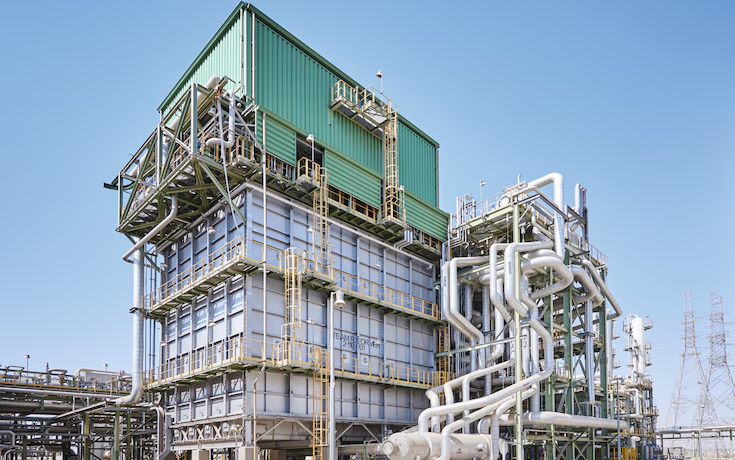
In this complex, interwoven world market of chemicals and materials, it is important to deeply understand a landscape of other trends and strategic perspectives. A landscape in a flux with technological breakthroughs, new regulations, and changing consumer needs requires businesses to delve deep and enable the knowledge to become informed. This in depth look follows the fine print of key trends that are shaping the chemical and material landscape and charts a roadmap for companies to not just survive but thrive in this environment.
1. Sustainability and Green Chemistry
Sustainable development and green chemistry are not mere buzzwords but a tectonic shift in the paradigm of the industry. It is the effect of concern for the environment, stringent regulations, and a trend for more eco friendly consumerism that forces companies to rethink their practices. Sustainable raw material usage, eco friendly manufacturing processes, and reductions in carbon emission are integral parts of corporate strategies. Business investment in sustainability helps the environment and positions these companies as responsible in the eyes of an increasingly conscientious customer base.
This can be done through investment in research and development related to bio based materials, renewable energy sources, and circular economy principles. Through collaborations with research institutions and providers of sustainable technologies, companies open avenues of innovation in this direction for competitive advantage.
2. Advanced Materials and Nanotechnology
Industries like electronics, health care, and aerospace are demanding high-performance material development. Rapid advancement in the area of advanced materials and nanotechnology has therefore become one of the priority areas of innovation and entrepreneurship. Nanomaterials are innovative material systems with unique properties hence, they are at the core of innovation in product performance enhancement for different business segments. The companies should be aware of these developments in technology if they are to be competitive. Investing in research and collaborating with innovators in materials science could bring new frontiers in product development and market reach.
Besides, advanced materials integrated into manufacturing will further enhance the efficiency, durability, and functionality of the finished goods. Companies that can juxtapose their strategies with such trends may well emerge as leaders in technological innovation.
3. Digitalization and Industry 4.0
In the chemical and material industry, digital transformation has wholly changed the concept of traditional manufacturing. Automation, data analytics, artificial intelligence, and the IoT have become part and parcel of Industry 4.0 technologies, driving toward operational excellence. The smart factories with sensors and real-time monitoring systems have already begun to enable better control over production processes for improvement in quality and cost efficiency.
Companies should thus upskill the labor force to meet the newest digital challenges, embed more digital solutions in the process chain, and make strategic decisions based on data driven insights. Collaboration with technology suppliers and industry consortia on digitalization will facilitate knowledge transfer and quicker adoption of transformational technologies.
4. Circular Economy Initiatives
The concept of the circular economy has been on its march and requires rethinking in companies about the way of producing and consuming. Companies have moved away from the linear model of take, make, dispose by rethinking product design for longevity and waste reduction and aiming at closed loop systems. Collaboration along the whole value chain-from pre-material suppliers up to the end users increases the success of circular economic initiatives.
In this circular economy, the product life cycle would need to be weighed from companies down to the exploration of sustainable packaging and reverse logistics mechanisms that enable efficient recycling and reuse. This may involve strategic partnership engagements at the level of recycling facilities through liaison with regulatory bodies.
5. Geopolitical Factors and Supply Chain Resilience
Geopolitical factors may be serious in consequence on trade tensions and regional conflicts within the chemical and material market. Companies need to devise agile and flexible strategies capable of steering through changes in geopolitical uncertainties. Mitigate risks: Build resilience within supply chains, diversify sourcing strategies, and stay updated on the dynamics of international trade.
This COVID-19 pandemic crisis has brought out the fact that global supply chains are fragile, and therefore, more time is required to confirm the dependencies and build in strong contingencies. Supply chain resilience could be enhanced through investment in digital tools for supply chain visibility, building strategic stockpiles of critical materials, and fostering strong relationships with suppliers.
6. Regulatory Landscape and Compliance Strategies
We also need to learn how to work our way through the always-changing chemical and material market. In such a highly regulated environment for use, labeling, and disposal of chemicals, proactive strategies would form the backbone of compliance. Companies will have to stay abreast of current regulations, invest in regulatory intelligence tools, and manage a robust system of compliance management. Active interaction with regulatory bodies, industry associations, and relevant legal experts may provide timely indications of changes in regulatory requirements, thus enabling companies to adapt and thrive within the legal framework.
7. Market Intelligence and Customer-centric Approaches
With the fast evolving technological domain and dynamic customer needs, staying up to date in your market intelligence is key. Businesses now will have to invest in data analytics, market research, customer feedback mechanisms, and competitive landscapes by understanding emerging trends and customer needs. Adopt a customer centric posture around product and services reshaped to meet evolving demand in order to heighten customers experiences and ensure further brand loyalty. Companies tend to give themselves a competitive advantage in dealing with market intelligence by presenting their offerings according to the expectations of a particular market and customer-centric strategies.
Conclusion
The trends and strategic insights prevailing in the chemical and material market will only be properly traversed with due consideration. Sustainability, advanced materials, digitalization, circular economy initiatives, geopolitical factors, regulatory compliance, and customer centric approaches constitute the backbone for the future of the industry. Businesses that assume such inward trends and go strategic in changing the modality of their operations will not only meet the market demands of today but also pave the path for the future. While informing themselves, being holistic will position companies as industry leaders in a landscape that demands adaptability and forward-thinking strategies.
Trending Posts

Global Silver Nanoparticles Market
The global silver nanoparticles market was valued at $2.08 billion in 2020, and is projected to reach $4.1 billion by 2027, growing at a CAGR of ~17%

LNG Bunkering – Here is something you must know!
In the current scenario of growing pollution, companies are trying to adapt more and more sustainable approach that not only gives eco-friendly result

The Basic Pension Comes - Federal Cabinet Decides On the Pension Supplement
Financial security in old age is an issue that is causing stomach pains for more and more people in Germany. Low-wage earners fear the elderly. The ba

The Future of Artificial Intelligence
In recent years, the field of artificial intelligence (AI) has witnessed unprecedented growth and transformative advancements. As AI technologies

Sailing into the future with Autonomous Ships
Autonomous Vehicles (AVs) are the uproar of this era. After airways, thanks to the companies like Tesla, that people are now getting used to see drive

Rising Demand For Uninterrupted Power Supply Is Expected To Drive The Power Rental Market
Todays world is totally reliant on electric power. There are many things which are not manageable without electricity. Power rental is a concept where

Rapidly growing IT industry coupled with the trend of bringing your own device (BYOD) is expected to provide new opportunities for growth of Cloud Collaboration
Cloud collaboration is the process of sharing and co-authoring the computer-based work through cloud technology

Factcheck on UV Disinfection for COVID-19
Many regulatory authorities and bodies believe that UV disinfection technologies can play a role in a multiple barrier approach to reducing the transm

The Global Ventilator Market Grows at a CAGR of 7.75 %
The Global Ventilator Market, which was at $688 million in the year 2016, is about to double by the year 2025, and reach a value of $1,347 million. Th

Vaccination: Vaccination Against Measles is Now Mandatory in Germany
The subject of compulsory vaccination has always heated peoples minds and caused emotionally charged discussions. The latest law in this area - the ob
Recent Posts

Growth and Future Trends of the Global In-Line UV-Vis Spectroscopy Market
In-line UV-Vis spectroscopy is a powerful analytical tool widely adopted in various industries for real-time monitoring of chemical and biological processes. This market is experiencing robust growth due to its applications in pharmaceutical.

Understanding the Growth Dynamics of the Premium Luggage Market
The market for premium luggage has grown massively over the years. This is attributed to several factors, including a change in consumer preference, increase in disposable incomes, and an overall rise in international travel.

Global Potassium Sorbate Market: Growth and Forecast
The Global Potassium Sorbate Market has gained significant traction due to the rising demand for preservatives across various industries, especially in food and beverages. Potassium sorbate, a salt of sorbic acid.

Global Venturi Masks Market Growth and Forecast
Venturi masks, also known as air-entrainment masks, play a crucial role in delivering a precise oxygen concentration to patients, particularly those suffering from chronic respiratory conditions such as COPD (Chronic Obstructive Pulmonary Disease).

Global Venous Thromboembolism (VTE) Therapeutics Market: Overview, Growth, and Forecast
Venous thromboembolism (VTE) is a critical medical condition including deep vein thrombosis and pulmonary embolism. In fact, it is one of the preventable causes of death in the hospital environment. It has experienced a substantial upsurge.

Global Vein Illumination Device Market: Growth and Forecast
The global vein illumination device market is experiencing significant growth, Due to a growing demand for minimally invasive procedures and an increase in chronic diseases, not to mention development in medical technology.

Global Vasculitis Treatment Market: Growth and Forecast
Vasculitis represents a group of disorders involving inflammation of blood vessels. It can affect parts of the body such as the skin, kidneys, lungs, and joints, and without proper treatment it may cause severe morbidity.

Global Fired Heaters Market: Growth and Forecast
The global market for fired heaters is growing at a rapid pace due to increased demand from major industries such as the oil & gas, chemical, and petrochemical sectors. Fired heaters are among the most crucial components of process heating systems.

Global Gas Flares Market Growth and Forecast
The growth in oil and gas production, environmental regulations, and a need for an effective waste gas management system are driving the global gas flares market. Gas flares are a crucial equipment in the oil and gas industry.

Global Steam Reformers Market: Growth, Trends, and Forecast
The steam reformers market is witnessing significant growth due to increased demand for hydrogen in industries like chemicals, refining, and fertilizers.
